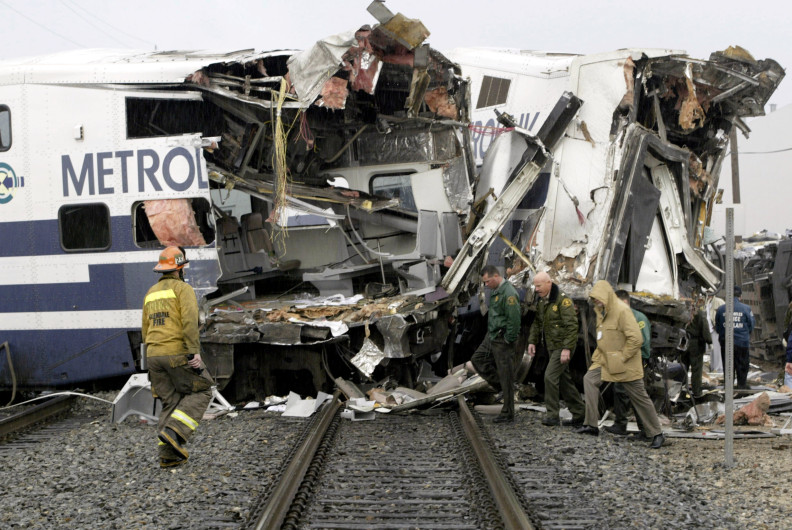Our laws are usurping the sovereignty of the People.
The Declaration of Independence and Constitution rejected the concept of a Crown Sovereign and established instead the sovereignty of the governed – the People. The proliferation of laws has eroded that sovereignty, that liberty.
We often hear our lawmakers’ pronouncement: “We are a Nation of Laws.” I say, “No, we are a Nation of People who love and desire freedom.” It is even a part of the text at the Statue of Liberty “Give me your tired, your poor, your huddled masses yearning to be free…” That is the hope that brought many of our ancestors here and still brings so many from around the World.
The original Constitution (1789) contains only 4,543 words, including signatures. Including all the 27 amendments, the total is 7,591 words.1 It is the shortest and oldest written national constitution still in use. It is an amazing document, considering its brevity and scope. The various State constitutions range from 8,295 words (Vermont) to about 389,000 words (Alabama).2,3
Laws are out of control.
However, since the early days of the Constitution, things seem to have gotten out of control. Untold thousands of Federal laws have been passed. Nobody knows how many for sure. Apparently, its too difficult to count them, because some of them are amendments to others, some are to repeal others, some are case law (written by courts based on past cases), and some are regulatory provisions that have the force of law.4,5,6 And these are just the Federal laws. The Constitution leaves most lawmaking to the separate States – fifty more quagmires!
Many of these laws tell us what we can’t do (for example, there were over 5000 Federal criminal offenses counted as of 2015).7 Some laws tell us what we must do (for example, pay taxes). Some allocate money for running the government and for all the entitlements that they promise the people in order to buy their votes. And some create agencies or other bureaucracies.
The Federal bureaucracy has grown enormously as well. Today, there are 15 Executive departments and hundreds of bureaus, agencies, laboratories, councils, and other offices 8,9 Most of these are in the Executive Branch, but there are plenty under the Legislative and Judicial branches as well. And there are a host of so-called independent agencies and corporations (like the CIA and the Postal Service).
Regulations are an even greater burden.
It seems that legislators at all levels think they must create new laws in order to justify their existence (and salaries). From 1995 to 2016 Congress passed an average of about 200 laws per year.5 If all those laws aren’t enough, many or most of them engender regulations. The regulations are not enacted by Congress; they are created by unelected bureaucrats in all those agencies, offices and so forth. How many are there? Forbes estimates an average of 20 regulations for each law.5 This may be an underestimate for newer laws.
To get an idea of the enormity, I looked up the Affordable Care Act (Obamacare) because I know it is a huge document. The law itself (actually two laws in one) is “only” 381,517 words. As of 2013 there were 109 regulations (10,535 pages in Federal Register) created by the affected departments; together with the original law there are about 11,588,500 words.10
Nancy Pelosi famously said “we have to pass the bill so that you can find out what is in it, away from the fog of the controversy.” Several months after it had passed, she was asked whether she had read it.11 She would not answer.
There is no way Pelosi, or anyone else knows everything that is in it. And yet doctors, pharmacies, healthcare insurance companies and the general population are expected to follow it. And this is but one of tens of thousands of laws, and hundreds of thousands of regulations that affect us all, in one way or another. Again, add in the even more enormous burden imposed by whatever state you live in.
All this leaves me wondering whether a society’s longevity is dependent on how much law its citizens can stand, before they rebel and start over from scratch. Remember, our Constitution has only been around 231 years and it is the oldest anywhere. Is this what really did in Rome?
Do we really need this?
The interesting thing about all this is that we all get along pretty well, in near total ignorance of most of these laws and regulations. We know about driver’s laws and may come across some of the regulations when we want to do something like adding on to our house or making sure our automobiles meet emissions standards. Other than that, how much do we really need, on a day-to-day basis? Yes, corporations need to adhere to safety and environmental regulations and the like, but most of us can get by with common sense.
Moses handed out Ten Commandments that covered most of the things that his people needed to live by (figs. 1,2).


Jesus made it even easier: “‘Love the Lord your God with all your heart and with all your soul and with all your strength and with all your mind’; and, ‘Love your neighbor as yourself’” (Luke 10:27, New International Bible).12 His reasoning was that if you really follow those, they will take care of the other commandments.
A simpler time, maybe, but I can see why so many of us tend toward the Libertarian mindset.
A simpler way.
I have a couple of simple suggestions that could help turn the situation around.
Suggestion 1. Laws
Congress should have a rule that in order to vote yes on any bill, a member of Congress must read the entire bill and certify that they understand it. Those who have not read it, or have read it but not understood it could vote no or recuse themselves.
This would have several benefits:
> First, because many members of Congress are not lawyers, the laws would need to be in plain English, not “lawyerese.”
> Second, the laws would be shorter, so they are easier to understand and implement.
> Third, if they really understand it, it would eliminate most of the “pork” riders that are typically written into laws to benefit certain constituents of those who wrote the law.
> Fourth, the public could also read and understand the laws. (It’s kind of like Martin Luther printing the Bible in the local language so the people could read it for themselves.)
> Fifth, and maybe most important, there would be far fewer laws. This is in part because it would take extra time for them all to read a proposed law. And, because those who have not read and understood the law can vote no, or recuse themselves it is more difficult to pass a bad or poorly written law. Moreover, because this rule would preclude voice votes, it would slow the process further. Even better, those voting could not remain anonymous.
Now, lawmakers are generally regarded as about as honest and honorable as a used car salesman. So, to make sure that they are telling the truth about reading and understanding the law, the rules would be strict. If it could be demonstrated that a legislator lied about having read and understood a law that they voted for (that would be lying to Congress), they would be censured, and perhaps fined and suspended, or expelled.
Suggestion 2. Regulations and Unnecessary Laws
This suggestion regards all the existing regulations and unnecessary laws. Government employees would be rewarded for finding ways to reduce or eliminate them. The employees of the various agencies have the greatest knowledge about the laws and regulations for their own departments. A bonus system like this would be far better than the kudos for suggestions that have been presented in the past for “showy” suggestions that have no real benefit or cost savings.
States and other Jurisdictions
Similar rules changes should be put in place in the States and other jurisdictions as well. I don’t have any illusions that any of this will come to pass. In fact, it is more likely that a state would make such changes. The House of Representatives and Senate set their own rules and would not want to implement rules such as these. They won’t even consider for themselves the term limits that they set for the President back in 1951.
Some states could enact such requirements for their own legislators through voter initiatives (propositions). But the only sure way to reign in Congress is through a Constitutional Amendment created in a Constitutional Convention, which has never been done. (See here for progress on a Constitutional Convention for term limits.
Although I think it is unlikely, I can only hope that some state has the foresight to do something like this and demonstrate positive results.
Your ideas?
If you have any alternative ideas, please comment. And to see future articles, you can subscribe. Thanks.
References
1. Constitutionfacts.com. (2019). Constitution Day Materials, US Constitution, Pocket Constitution Book, Declaration of Independence, Bill of Rights. [online] Available at: https://www.constitutionfacts.com/us-constitution-amendments/fascinating-facts/.
2. Wikipedia Contributors (2019). State constitution (United States). [online] Wikipedia. Available at: https://en.wikipedia.org/wiki/State_constitution_(United_States).
3. Ballotpedia. (n.d.). State constitution. [online] Available at: https://ballotpedia.org/State_constitution.
4. Cali, J. (2013). Frequent Reference Question: How Many Federal Laws Are There? | In Custodia Legis: Law Librarians of Congress. [online] blogs.loc.gov. Available at: https://blogs.loc.gov/law/2013/03/frequent-reference-question-how-many-federal-laws-are-there/.
5. Jr, C.W.C. (n.d.). How Many Rules And Regulations Do Federal Agencies Issue? [online] Forbes. Available at: https://www.forbes.com/sites/waynecrews/2017/08/15/how-many-rules-and-regulations-do-federal-agencies-issue/#4e8ab63b1e64.
6. kowal.com. (n.d.). How Many Federal Laws Are There? No One Knows. | Kowal Communications. [online] Available at: http://kowal.com/?q=How-Many-Federal-Laws-Are-There?
7. Vespa, M. (2015). How Many Federal Laws Are There Again? [online] Townhall. Available at: https://townhall.com/tipsheet/mattvespa/2015/06/06/how-many-federal-laws-are-there-again-n2009184.
8. USA.gov (2018). Branches of the U.S. Government | USAGov. [online] Usa.gov. Available at: https://www.usa.gov/branches-of-government.
9. Wikipedia Contributors (2019). United States federal executive departments. [online] Wikipedia. Available at: https://en.wikipedia.org/wiki/United_States_federal_executive_departments.
10. CNSNews.com. (2013). 11,588,500 Words: Obamacare Regs 30x as Long as Law. [online] Available at: https://www.cnsnews.com/news/article/penny-starr/11588500-words-obamacare-regs-30x-long-law.
11. CNSNews.com. (2013). Pelosi Won’t Say If She’s Read It To Find Out What’s In It. [online] Available at: https://www.cnsnews.com/news/article/penny-starr/pelosi-wont-say-if-shes-read-it-find-out-whats-it.
12. Biblehub.com. (2019). Luke 10:27 He answered, “‘Love the Lord your God with all your heart and with all your soul and with all your strength and with all your mind’ and ‘Love your neighbor as yourself.’” [online] Available at: https://biblehub.com/luke/10-27.htm.
13. U.S. Term Limits. (n.d.). Term Limits Convention Progress Map. [online] Available at: https://www.termlimits.com/progress/.
Figure 1. Vogel, L. (n.d.). The 10 Commandments Importance in Modern Life. [online] www.jesusboat.com. Available at: https://www.jesusboat.com/the-ten-commandments-importance-in-modern-life/.
Figure 2. www.chabad.org. (n.d.). The Ten Commandments. [online] Available at: https://www.chabad.org/library/article_cdo/aid/2896/jewish/What-Are-the-Ten-Commandments.htm.
Featured Image: Getwallpapers.com. (2020). [online] Available at: http://getwallpapers.com/wallpaper/full/9/2/4/239227.jpg.


